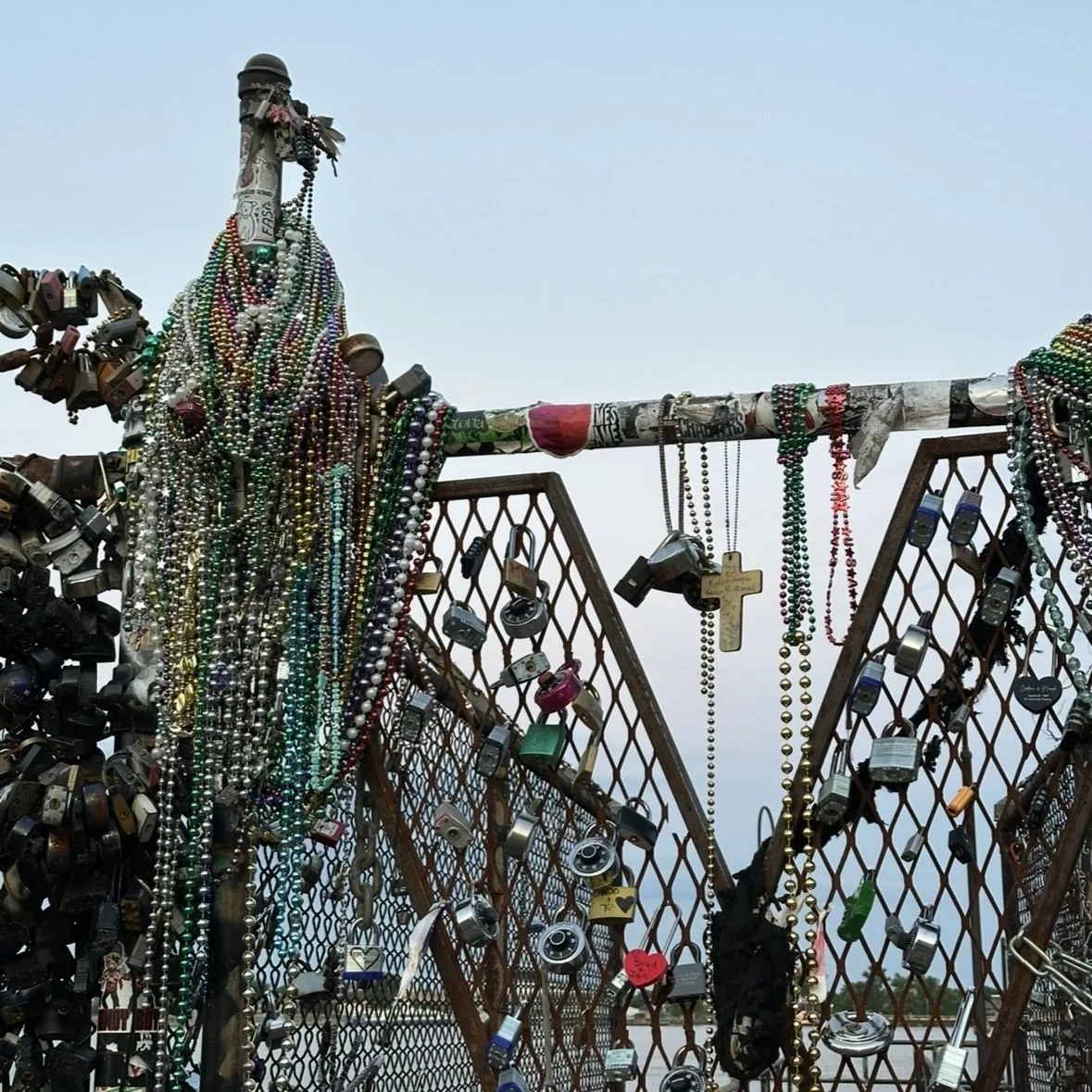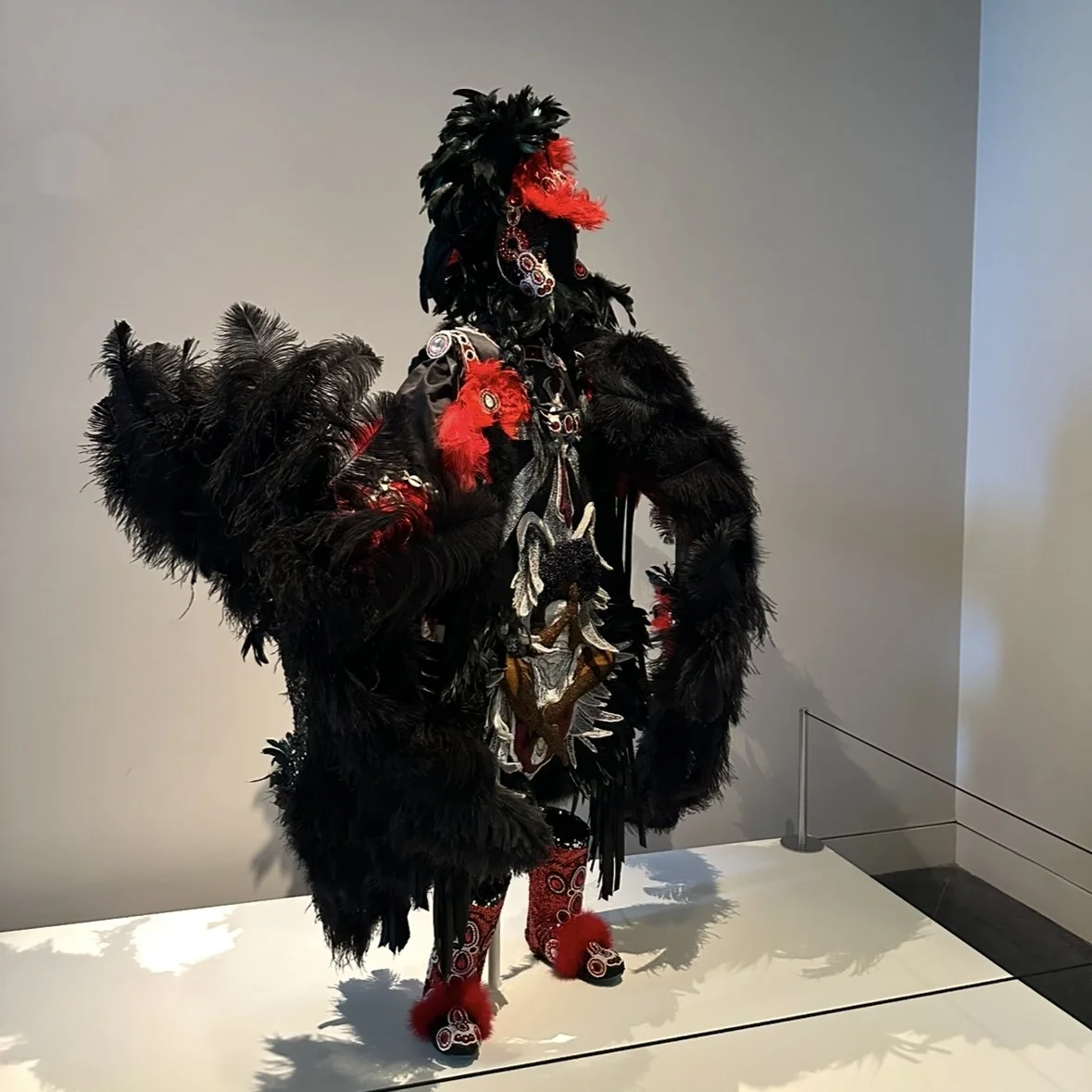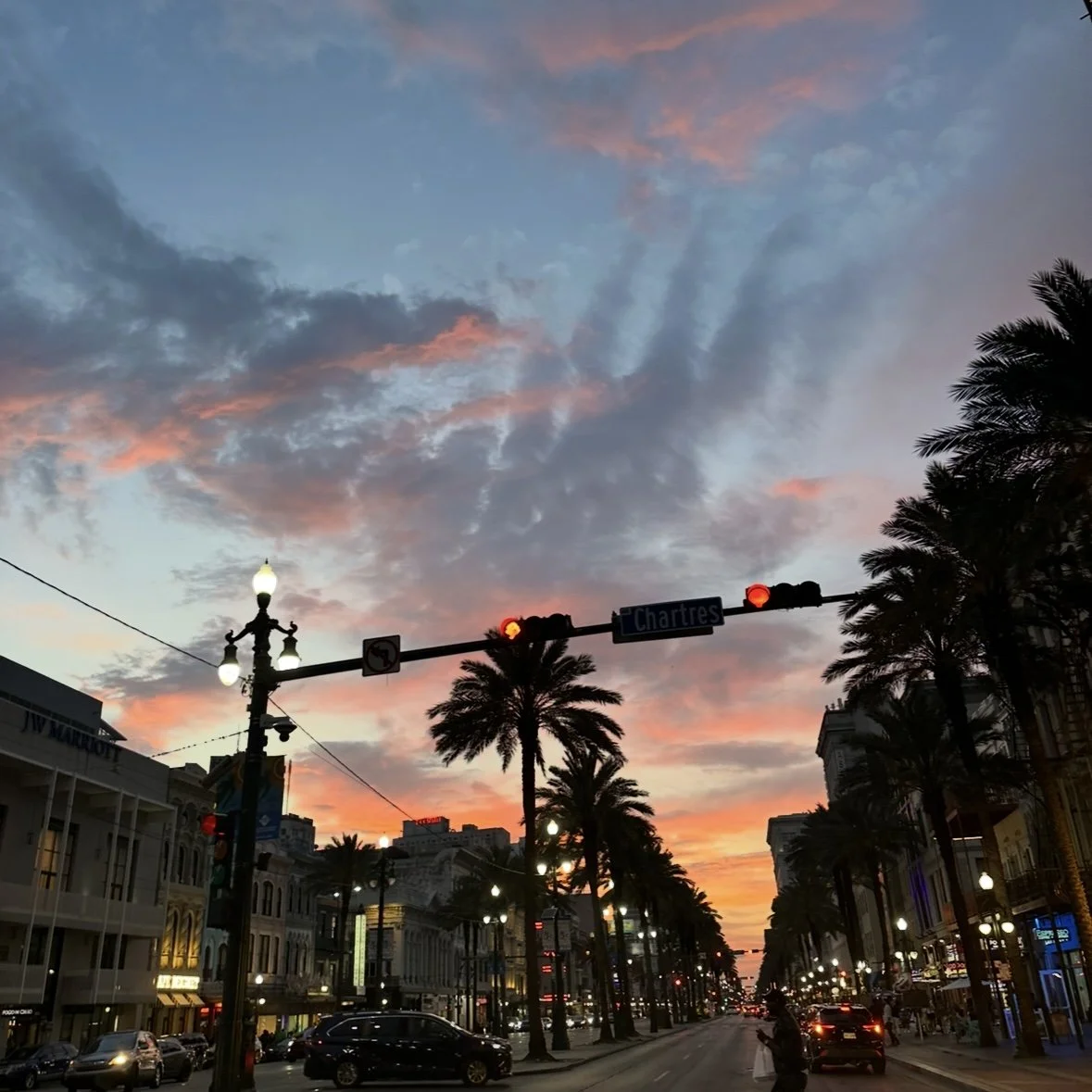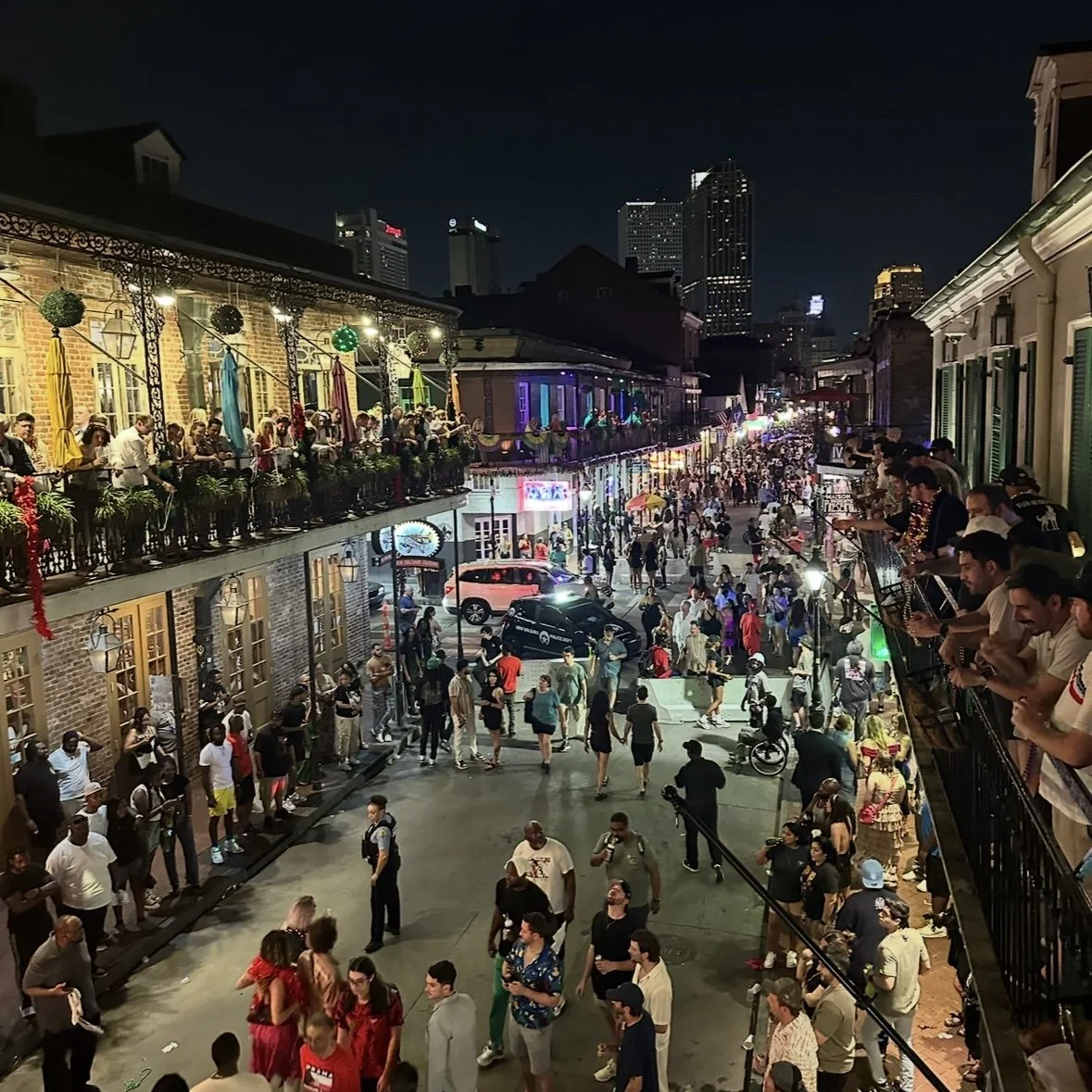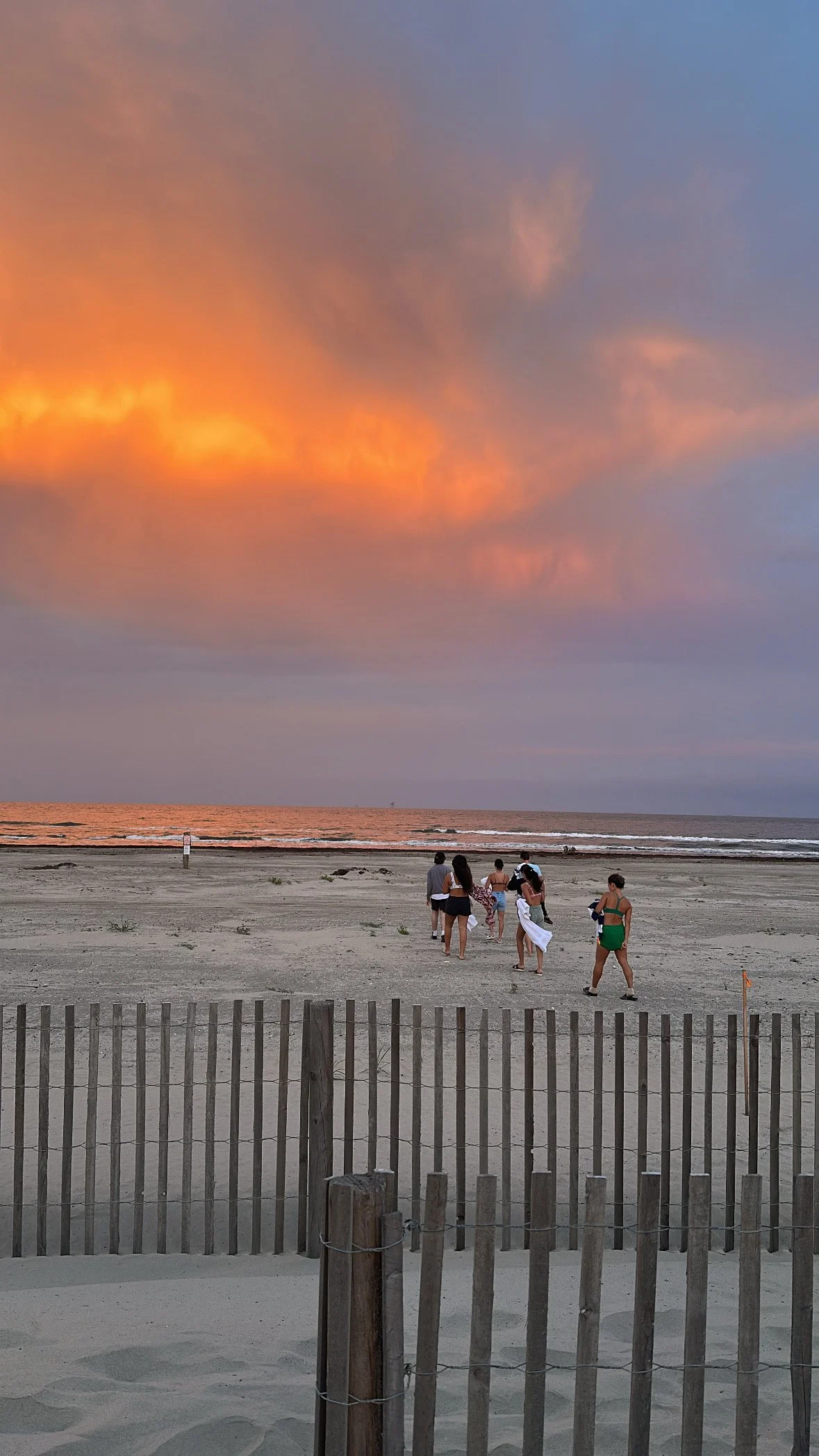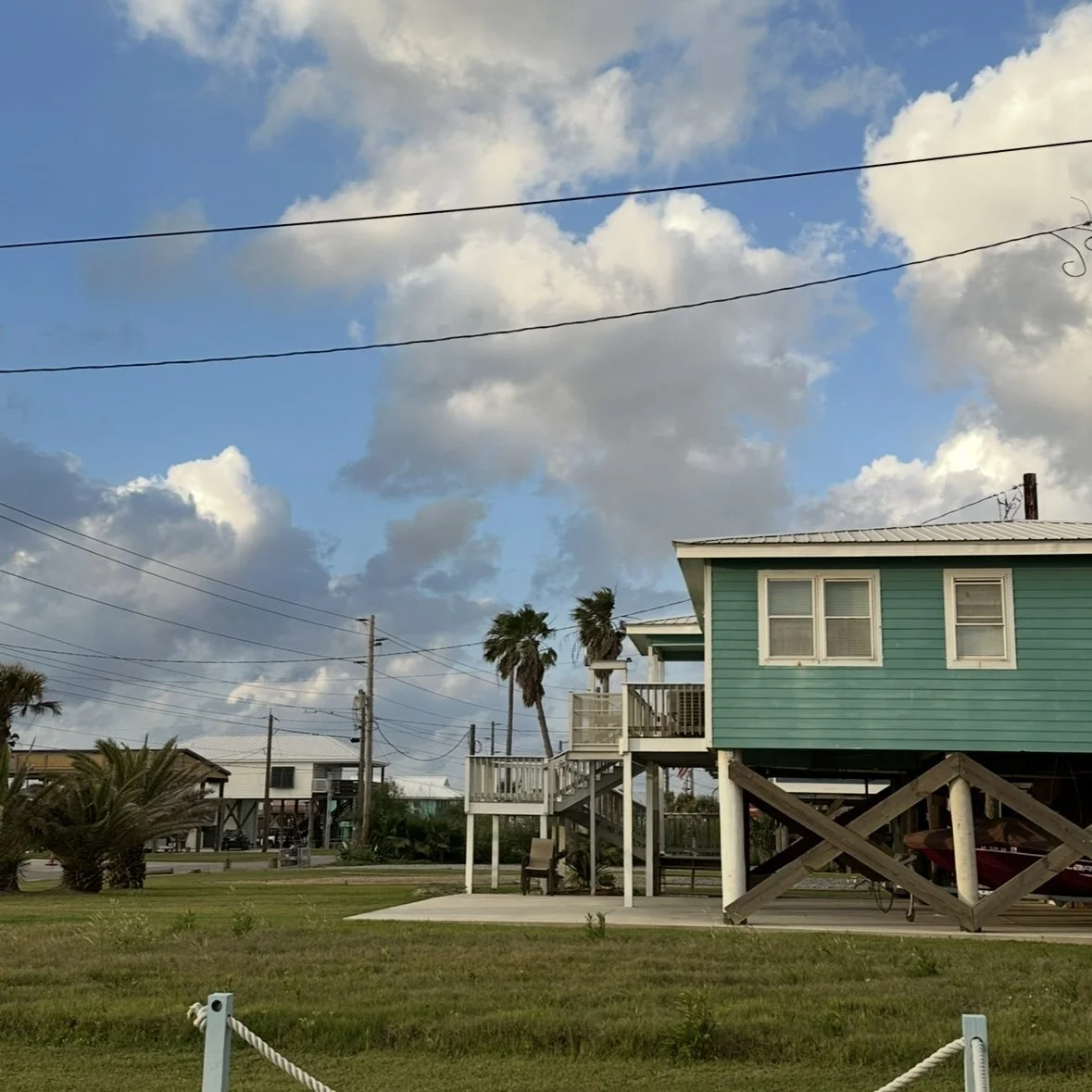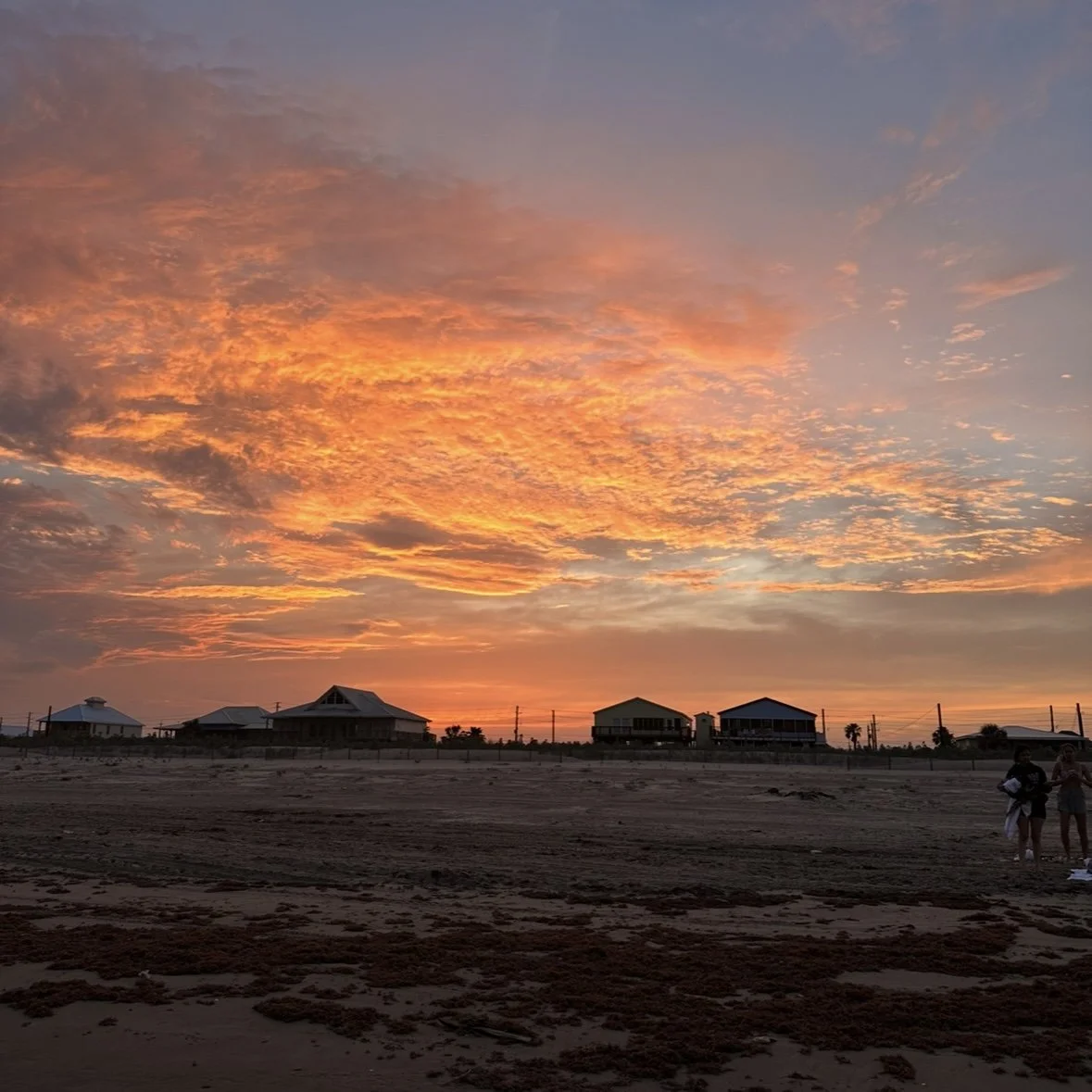“Don’t you just love those long rainy afternoons in New Orleans when an hour isn’t just an hour - but a little piece of eternity dropped into your hands - and who knows what to do with it?””
No, not really.
Long rainy afternoons in New Orleans do feel like a little piece of eternity dropping into your hands, but there is absolutely nothing to love about them. Today, June eleventh, marks the fourth time in three weeks that I’ve been completely drenched by a sudden downpour!
When it rains in New Orleans, an impenetrable mass of cloud first gathers in the sky. The extending pillow of darkness asphyxiates the streets, leaving the air moist, dense, and sticky. A flash of lighting seals your fate, and consequent booms of thunder crushes all hopes of safe escape. Water rolls down in strands and panels that shift and billow like a sheer white curtain tousled by the wind. Palm trees guarding the streetcar rails fold forwards and backwards.
It was under such a setting that Serina and I left Café Beignet on Canal Street, convincing ourselves that the storm was easing up: a dreadful case of wishful thinking. What is usually an easy stroll back to our hotel was in fact an almost insurmountable quest. Our umbrellas betrayed us, their metal frames twisting and inverting as if possessed by the wind. They felt less like shields and more like sails, dragging us backwards rather than protecting us. Tired of wrestling the umbrellas forward and afraid of being lifted off the ground, we finally closed them, choosing instead to push forward bare into the storm. Pellets of rain now stung at our exposed faces and arms. The wind hurled water into us with such force that I couldn’t open my eyes, and I had to brace myself against the buildings just to stay upright. This was a typical man-vs-nature struggle and we were at an embarrassing loss. Puddles of water had grown into swollen streams, creeping above my ankles, and I was forced to take off my flip-flops and walk barefoot, hoping that I wouldn't fall victim to some obscure skin disease. My clothes were cold and chafed uncomfortably against my arms and legs with every step. Along the way, we stopped regularly, ducking into whatever hotels would let us in, giving each other quick pep talks in the freezing air conditioning before plunging back into the tempest.
When I finally got back to the hotel, I immediately called my parents.
“Yeah, I don’t think I would ever want to live in New Orleans anymore. The weather here is just… too much.”
Over the past month, I’ve often joked with my parents that I’d love to move to New Orleans. From the buttery sound of jazz spilling out of Preservation Hall to the creamy scent of pralines wafting from Aunt Sally’s, the city feels filled with magic and wonder. Some of my favorite memories were the quiet moments – taking slow walks through the French Quarter on languid evenings after dinner, or riding the streetcar down St. Charles Avenue before wandering through the antique shops on Magazine Street. In these moments, the air was soft and sweet. An occasional breeze would run and disappear down the live oak lined boulevard.
But, as I came to realize, life here isn’t just made of happy times and sunny days. As much as I like to imagine living in New Orleans, the reality is that many people don’t have the privilege of seeing only the beautiful parts. Natural disasters are an inevitable part of life.
Louisiana has been historically ravaged by storms and hurricanes, its communities forced time and again to pick up the broken pieces. The incomplete skeletons of beach houses on Grand Isle still stand as quiet witnesses, telling the same stories echoed by forgotten shells of homes in New Orleans East. At the Katrina and Beyond exhibit in the Presbytère, countless lives and stories are distilled into numbers and short paragraphs. They attempt, yet never fully succeed, to capture the true scale of devastation. There’s just no adequate way to express the horror each person endured nor the collective trauma carried by an entire city.
The aftermath of the hurricane hurt each person differently. During the Creole cooking class, our instructor, Chef Maria, spoke candidly about how her culinary journey was shaped, and nearly derailed, by Hurricane Katrina. “I remember that exact moment,” she recalled, “when they told me that the levee broke.” Water flooded Maria’s New Orleans restaurant and left it in irreparable ruins.
Yet, Maria’s story is ultimately one of resilience and hope. Her life is as flavored as her cooking, buttered with all sorts of adventures. Hurricane Katrina was not the end. After the storm, Maria moved to California, taking on new roles as a cooking instructor and private chef for vacation homes. She spoke of building new connections with clients and sharing her love for food wherever she went. She told us stories about working with celebrities, joking about their quirks and personalities. She eagerly explained the origins of various dishes: how the spices in gumbo were originally used to mask the smell and taste of aging ingredients, and how barbeque shrimp contains no barbeque at all – born instead from two tired chefs improvising with leftover shrimp, determined not to waste any food after a busy day.
In the warm glow of the yellow room, we watched as Maria cooked dish after dish, transforming ordinary ingredients into meals that filled the air with deliciously irresistible aromas. Generous chunks of butter. Whole bowls of sugar. Pan-fulls of oil. Each dish was filled with bountiful amounts of unhealthy ingredients that I couldn’t dare to eat even in a week. Maria’s cooking isn’t about making a healthy, sanitized Los Angeles-approved health meal that I was used to. There’s a certain sense of comfort in her cooking that no salad can provide.
Maria’s story is just one example. In New Orleans, there had been so many instances through which I was able to see the way that people triumphed over hardship by pushing through courageously, sometimes creating beautiful things in the process. They have shown me that deviating from the linear line that you want your life to take on isn’t necessarily the end of the world. I saw defiance against the crushing effects of the storm, a sense of hope and a refusal to lose. Resilience is everywhere – from the books we read to the lives of those we encounter.
Life isn’t all sunny days and happy memories; that’s just a fact. Sometimes, it’s about pushing through the storm and carrying its memory with you, so that when you see someone else caught in it, you’ll know how to help.






